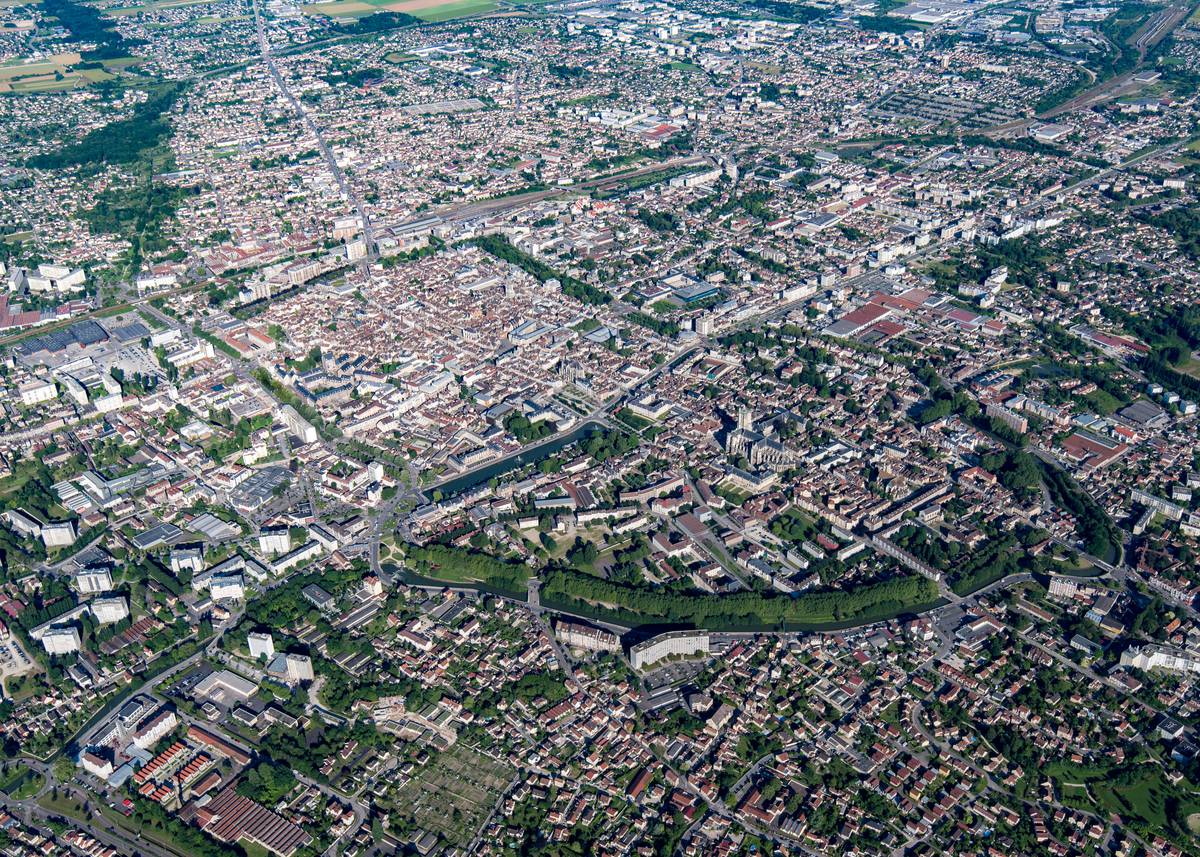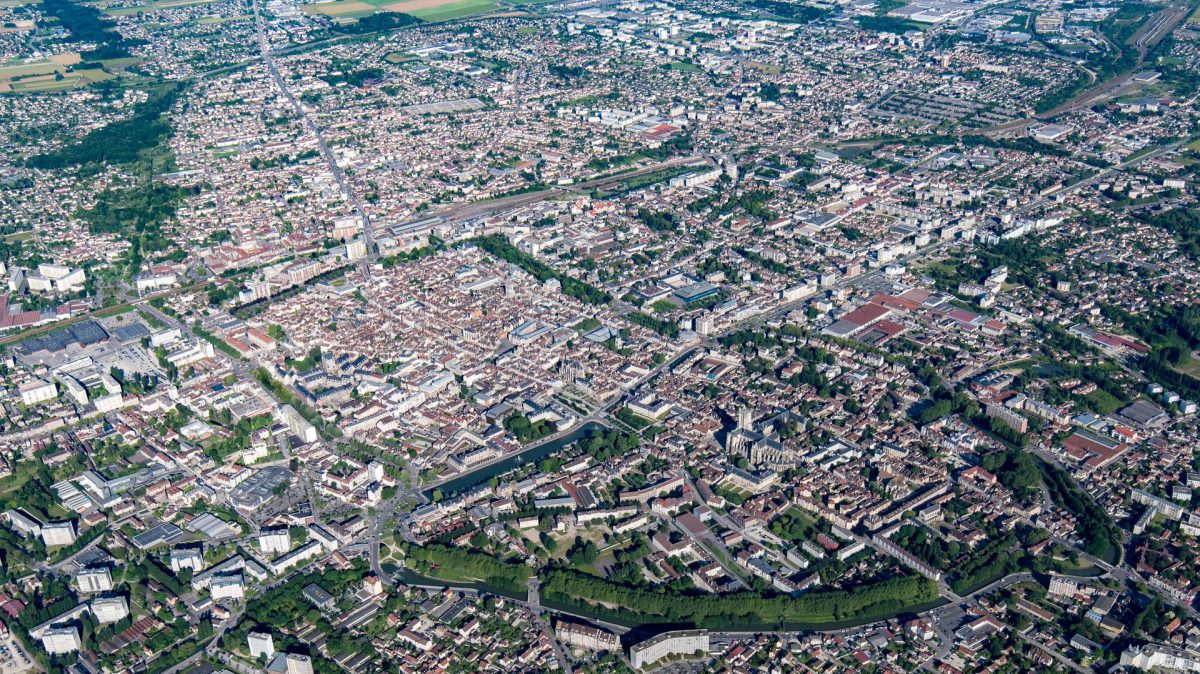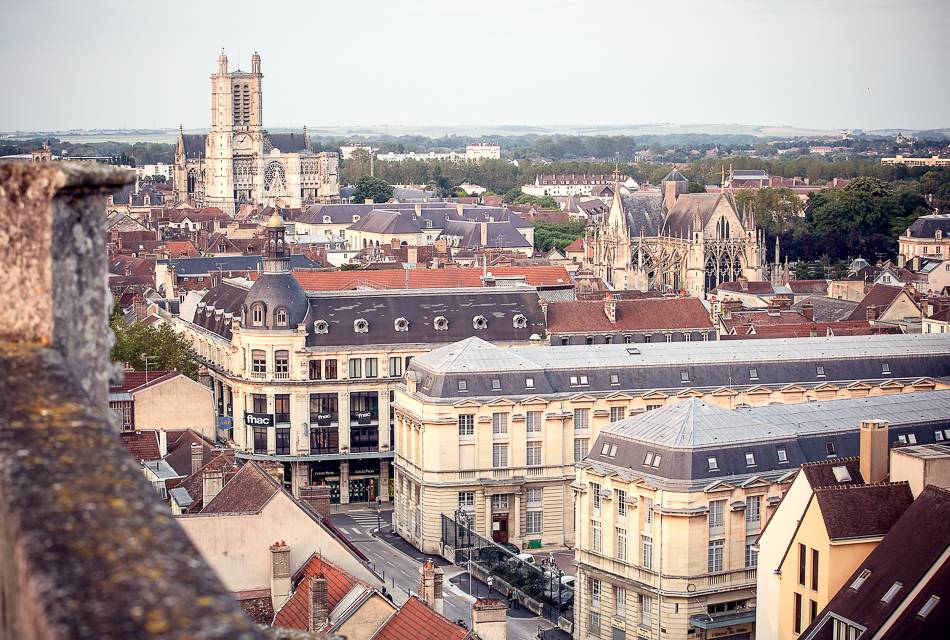The champagne cork
When viewed from above, the old centre of Troyes is shaped almost exactly like a champagne cork. It is for this reason that locals refer to the old part of the city as the Bouchon de Champagne (French for “champagne cork”) (1).
This popular nickname is even used in some official documents.
Yet this shape, and the name to which it gave rise, were not a deliberate reference to the local tipple. The outline of the city centre was set in stone some five centuries before the supposed “invention” of champagne by Dom Pérignon. In that sense, one could argue that the shape was a premonition of things to come.
A vestige of the past
In fact, this characteristic shape is a vestige of the past, the result of successive transformations of the city. It is a story that begins with the outline of the Gallo-Roman city, involves successive diversions of the River Seine, and ends with the erection and subsequent demolition of the ancient fortifications.
It was in the 12th century, following the expansion of the ramparts, that the fortifications (which encompassed the entire city at the time) took on their current shape, namely a champagne cork. The ramparts were punctuated with a series of towers, arches and gates.
Luckily, the destruction of the fortifications during the French Revolution did not alter the shape of the cork, since no houses were built atop the ruins. Instead, the ancient moats and ditches were replaced with «little gardens». These gardens remain to this day, and their basin-like topography recalls the site’s former vocation.
The city’s modern-day boulevards follow the outline of the demolished ramparts.
The “prediction” built into this outline by the Counts of Champagne finally came true, with champagne-producing vineyards covering the slopes of the Montgueux hillside, visible on the horizon to the west of Troyes. These vineyards are tended by around 20 winemakers, who produce the sparkling wine that has made the region famous throughout the world.
According to American artist Harold Carl Geyer (1905-2005), the original layout of the city of Troyes is not shaped like a champagne cork at all, but rather like a vast church. In his view, the upper part of the city is the nave, the lower part of the city is the choir, the canal forms the transept crossing, the River Seine is the apse and the cathedral itself is the altar…
Each to their own!


